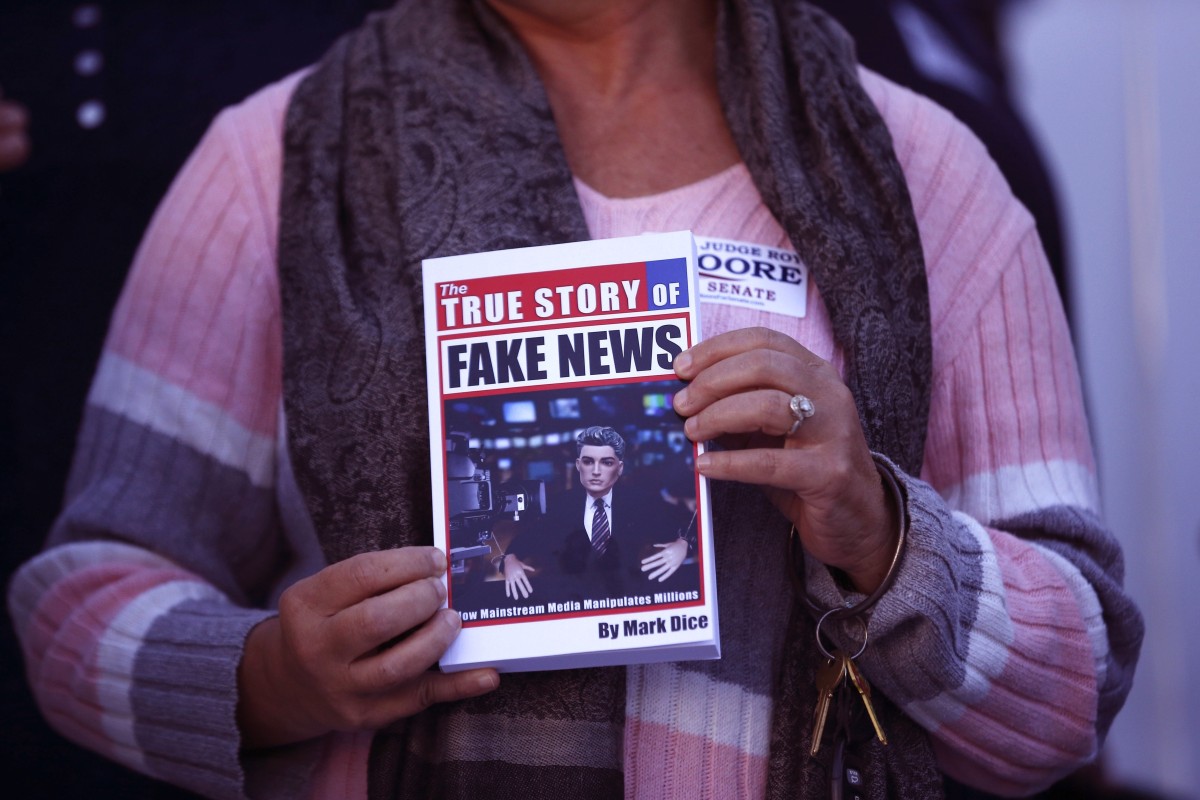
President Donald Trump has accused the media of being biased towards liberal views - but that couldn’t be further from the truth
 Is 'fake news' the thing that is really fake?
Is 'fake news' the thing that is really fake?Everyone loves to hate the media for its supposed liberal bias but Donald Trump, never one to lose at things, has taken it to new heights.
Trump has called the media “highly slanted”, “fake news”, and “the enemy of the American people”. Like so much of what he says, his claims need fact-checking, all the more so because the myth has been around much longer than Trump. Years before he was politically centre stage, Sarah Palin dubbed it the “lamestream” liberal media, while to Newt Gingrich it was simply the “elite media”. Trump just did what he does best: supercharge the myth.
To the extent the claim has truth, it is limited to the political persuasions of editorial staffers, many of whom exercise relatively little editorial control. The more salient questions around bias, then, have little to do with staffer headcounts, and more with the allegiances and affiliations of owners. They also, in this increasingly polarised news environment, have to do with the sources where Americans get their news.
The answers there point, overwhelmingly, to conservative control.
Television remains the dominant source of political news for Americans, and conservatives, through Trump-friendly outlets including Fox News on cable and Sinclair Media Group on local broadcast, dominate the space. What’s more, from the looks of it, they will continue to do so.
Fox remains the most-watched cable news outlet. And last month Trump’s broadcast regulatory body helped pave the way for Sinclair, already the biggest player in local broadcasting, to reach nearly 70 per cent of US households in a merger previously prevented by public broadcasting monopoly protections. This is unprecedented.
With the internet making fast inroads into television’s grip on the public consciousness, it’s little wonder the Trump administration is targeting net neutrality rules, in addition to favoring White House-friendly outlets Breitbart news and Circa, Sinclair’s online arm.
Fox was busy skimping on coverage of Trump’s sexual accusers, and The Wall Street Journal pulled its best punches.
That people identifying as “consistent conservatives”, according a Pew study from 2014, are more loyal to their top outlet and distrustful of media in general would only seem to make the consolidation more worrisome. Worse still: they cluster around a single source of news.
It’s no wonder then so many Fox News Republicans find it easier to disregard, say, the overwhelming evidence of climate change: a full 47 per cent cited the conservative cable network as their main source for news. No other political news source even came close. Among the parallel group of liberal respondents, no single outlet was named by more than 15 per cent.
Even to the extent political bias can be said to be about individual staffers in individual newsrooms, the portrait is far from crystal clear. Newsroom headcounts do favour Democrats over Republicans, but not as much as they favour independents: as of 2013, just 7 per cent identified as Republicans , while 28 per cent declared themselves Democrats, according to a 2014 survey by Indiana University. But more than half of those surveyed identified as independents, the highest on record since the survey began.
If anything, it would appear, reporters skew moderate or “other”, though such notions of balance – that to be objective you have to be moderate or abstain from democracy – are in and of themselves problematic.
The New York Times, for instance, shouldn’t have to prove its political independence. Yet how else to explain why, during the presidential campaign, the paper pursued Hillary Clinton’s emails with a fiery fervour unmatched in anything they pursued against Trump? According to the Columbia Journalism Review, “the various Clinton-related email scandals accounted for more sentences than all of Trump’s scandals combined”.
Such thinking can extend beyond media too. By developing critiques of elite institutions intended to play mediator to public discourse (think academia or science), the right too often hides behind a veil of false equivalency, ably spurning school curricula, newspaper columns and scientific consensus alike.
And of course, political bias isn’t the only bias at work. In the difficult financial reality faced by today’s media, many outlets and their reporters are more beholden than ever to billionaires and their large corporations. Both those things, Trump’s broadsides against Jeff Bezos notwithstanding, skew conservative. So too does the racial and gender makeup of the media’s most powerful personalities, who are overwhelmingly white and male.
The media hasn’t grown more liberal. In fact, it wasn’t even all that liberal to begin with – that’s just another of Trump’s lies. What has changed is the public perception around it, and how effectively Trump has exploited negative opinion and animosity toward an unpopular monolith to obfuscate truth and aid his own rise.
Media spin, liberal or otherwise, is and was never the problem. It’s how we were all spun for fools, by him.